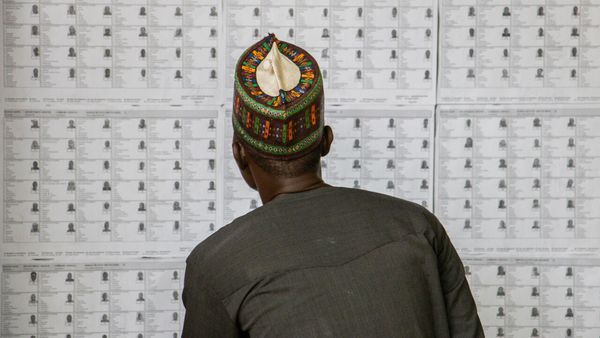The names and some identifying details of people from Afghanistan in this story have been changed for their families’ safety.
The sobs of a little girl in a yellow dress punctuated the hiss of a tear gas canister. In the shaky cell phone video filmed by 19-year-old Aadella Sadaat on the streets outside of the Kabul airport on August 26, the little girl slid out of frame, replaced by disjointed images: running feet, masked faces, a woman’s hijab, a trash-strewn road. Dozens of people, including Aadella’s younger siblings and parents, teetered on a concrete median beside a highway. As the tear gas gushed toward them, they grabbed suitcases and backpacks, shielding their faces and rushing into oncoming traffic.
Aadella and her family had been trying to get on a flight to the United States, despite warnings of a security threat at the Kabul airport. They got as close to the east gate near the interior ministry as they could, where they had heard it was safer. Things were fine for the first hour or so, but suddenly the Taliban fired tear gas and bullets to disperse the crowd. Only later, when the Sadaats returned red-eyed and dizzy to their relatives’ house a few miles away, did they hear about explosions at Kabul Airport’s other gates that killed 182 people.
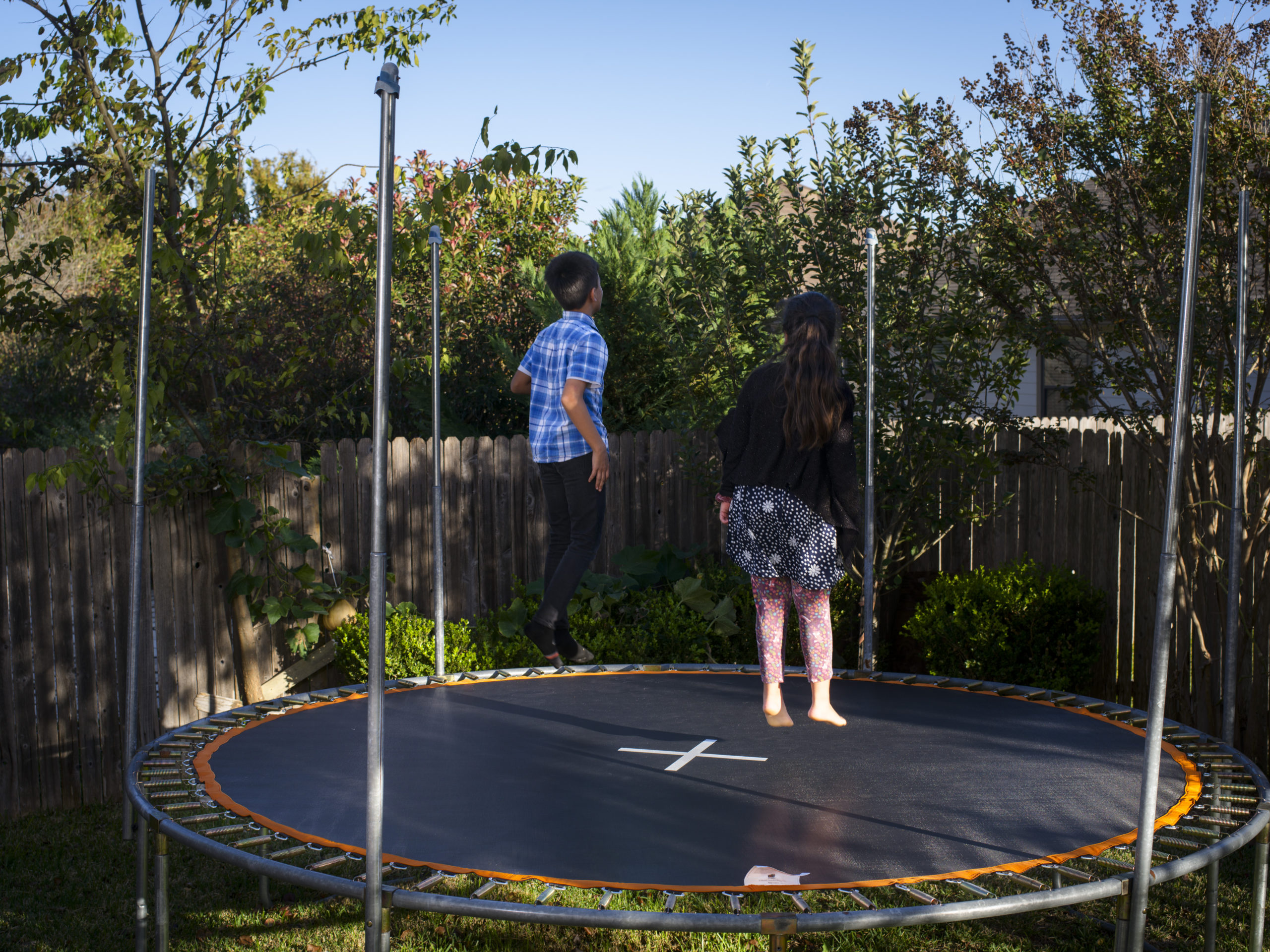
The explosions marked a turning point for American evacuation efforts, which began on August 14, as the Taliban gained near-complete control of the airport. But August 26 was an important date for the Sadaat family for other reasons: Their U.S. citizenship interviews were scheduled to take place in an office in Austin, Texas, that day. They had waited for two years to get an email notifying them they could finally become citizens of the United States. They had no idea they’d be stuck in Kabul when the email arrived, nor did they know they’d be unable to return to Austin, where they have lived for seven years.
The Sadaats ended the day texting friends back in Texas—not joyous messages of celebration as new U.S. citizens, but updates on what was happening: “There was a suicide attack on the northern gate of the aiport,” Naser wrote. “Fortunately we were not there. Instead, we chose the east side gate next to the Interior Ministry, but later on they used tear gas and fired grenades and bullets to disperse people. It was terrible.”
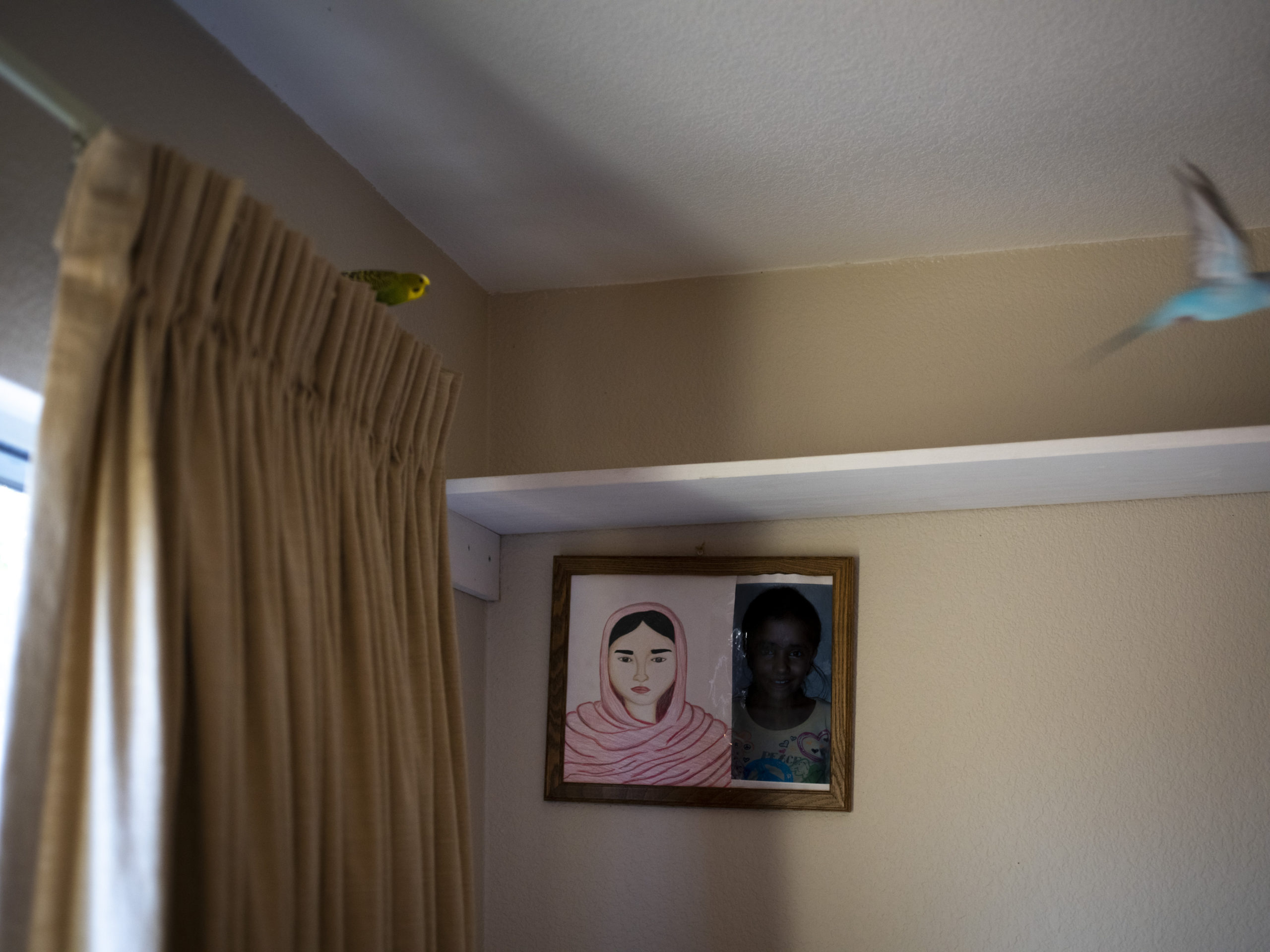
I was one of the people receiving his texts in a WhatsApp group with an attorney, a global health program coordinator, the director of a school for English language learners, and a staff member from the Sadaat kids’ middle school. None of us had experience getting vulnerable people out of combat zones. Yet in the last two weeks of August, as we desperately tried to figure out how to help the Sadaats and others, we had improbable interactions with people in the highest levels of the U.S. government and dozens of loosely formed operations centers that had sprung up seemingly overnight dedicated to getting Afghans and Americans out. Almost everyone I talked to had their own list.
When we received the Sadaats’ messages, we were grateful they were safe; we expressed regret that they had missed their interviews, but at the time it felt like a technicality, something that could easily be rescheduled later. As it would turn out, the fact that the Sadaats had not completed their citizenship process, despite being days away, meant that they found themselves on the wrong side of President Joe Biden’s priority line for evacuation from Afghanistan.
For much of Naser Sadaat’s career, he put himself in danger to make Afghanistan safer. On October 7, 2001, when the U.S. and other allied forces first conducted targeted airstrikes into Afghanistan, Naser was working at the Mine Detection Center, a non-governmental organization that clears mines and explosive remnants of war. He said the arrival of the coalition forces made him “hopeful that our country would be rebuilt and there would be peace and stability.”
It wasn’t long before Naser began working at the then-U.S.-controlled Bagram Air Force base as an interpreter. He started at a facility preparing Afghan National Security Forces for senior positions and later moved to the Justice Center in Parwan, a centralized Afghan criminal court that US officials and other international partners supported, which everyone called the JCIP. He wanted to utilize his interpretation skills in a way that made a real difference for the fate of his country. His work at the JCIP grew increasingly dangerous as the court convicted powerful Taliban leaders. As a senior justice advisor wrote in a 2013 letter, everyone who worked at the JCIP are “particular targets, with the JCIP’s anti-terrorism message,” but Naser “has stood out as both willing and consistently able to hazard these dangers.” He dealt face-to-face with detainees during trials at the JCIP, eventually handling more than 4,000 cases. Witnesses heard defendants yell, “We’ll come and find you, we know who you are!”
In 2013, those threats became reality. Late one night, several men entered Naser’s home, tied his hands, and ransacked the house. His wife, Dina, woke up; in a small bit of mercy, the children remained asleep. The intruders took jewelry and money and threatened the family. The moment that they left, Naser and Dina decided to apply for a Special Immigrant Visa.
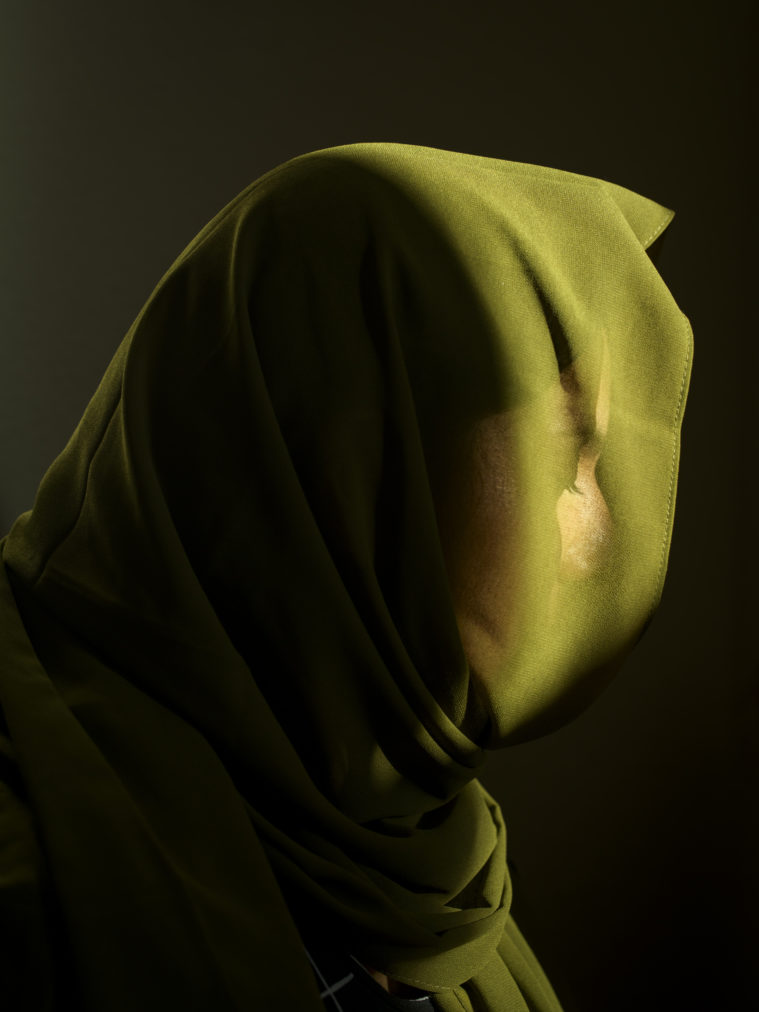
The Special Immigrant Visa program began under George W. Bush for Iraqis who provided special services to U.S. missions in the country, but was expanded to include Afghans in 2009. It provided a unique category for resettlement, bypassing the Federal Refugee Resettlement Program’s requirement that vulnerable people flee their country of origin before being considered for resettlement in the United States. The program was a promise made to Iraqi and Afghan allies in the midst of war: If you put yourselves in danger for our mission, we will ensure that you and your families are safe.
The United States made good on that promise in December 2014. The Sadaats chose Austin for resettlement, as Naser remembers, because he had heard it was “a lovely city. I thought, ‘It will be a good place for me and my family to start a new life.’”
The first few years were difficult as the family worked to navigate a new city, country, and language. Enrolling the children in school, figuring out the transportation system, understanding the bureaucracy that governed their benefits, Dina trying to learn English—every task felt daunting. The Sadaats lived in a small condo for five years while Naser worked as a security guard, sometimes also driving an Uber. Dina picked up caretaking and sewing jobs. After five years, they bought a house in the northern suburbs of Austin.
The two-story home was perfect for them, they thought. Four bedrooms occupied the second floor; a fifth bedroom downstairs served as a lounge where the men hung out with friends. The women congregated in the open kitchen and living room. But they still missed their extended families in Afghanistan. Naser and Dina had siblings and cousins, each with their own large families. They longed for visits in their home village: walking among the orchards, picking grapes in the vineyards, watching their children dance and play with cousins at weddings.
The Sadaats made a last-minute decision to visit Afghanistan in July 2021. Naser’s mother died in 2018, when they couldn’t afford the trip for the whole family; they began to save up and wanted to return when Dina’s father died in May 2020, but it wasn’t safe to travel because of the pandemic. A year later, the number of COVID-19 cases was trending down; everyone in the family over the age of 12 had been vaccinated. Naser thought they could stay with relatives, rarely leaving the house, and give his children an opportunity to know their extended family while avoiding anyone who would remember his work from years past. And the Biden administration had announced that U.S. troops would stay until September 11, which gave them just a few weeks to say goodbye to their families and country, probably forever.
In February 2020, the Trump administration had signed a deal with the Taliban: The U.S. would pull all troops out by May 2021. In return, the Taliban would not foster al-Qaeda and other groups that would “threaten the security of the United States and its allies.” Vanda Felbab-Brown, a senior fellow at the Brookings Institution, called it “a bad deal, but the best deal that—given the battle-field dynamics—Ambassador Zalmay Khalilzad was able to get.”
When Biden became president, he had little time to decide what to do with the deal the Trump administration handed him: To withdraw from the deal might lead to an open-ended war with the Taliban. To propose a new deal was a non-starter. In the end, the only option was an extension of the deadline. In April, Biden announced that U.S. troops would be withdrawn from the country before September 11, 2021; then, in July, he moved the deadline up to August 31.
In order for the withdrawal to be effective, the Afghan Security Forces, which the United States had trained and assisted for two decades, would have to stand against the Taliban. The fact that the Afghan Security Forces might not be up to the task was no secret. Felbab-Brown, who has traveled to Afghanistan some 30 times, has been speaking about the issues the security force faced for years. She identified herself as being on the “most pessimistic side” of U.S. foreign policy experts; her earliest estimate was that the Taliban would capture several provincial capitals and eventually take over the country by spring or summer 2022. What happened next shocked Felbab-Brown: “No one expected that in the last phase, Afghan security forces would collapse in 10 days. I cannot think of anyone in the U.S. government or out that had 10 days in mind.”
The Sadaat had return tickets for August 31, which left plenty of time before the U.S. would fully withdraw from the country. After they arrived, they learned Biden had changed the withdrawal deadline. Soon after, they got word that their citizenship interview had been scheduled for August 26. In early August, they tried to change the tickets. But the fees to change eight tickets were exorbitant, so they decided to wait a few days before deciding. It is one of many moments they look back on now with regret.
When the Taliban captured their first city, Zaranj, on August 6, Aadella’s friends in Austin began to worry because she was not responding to any messages. Since 2017, Aadella had been a part of GirlForward, a nonprofit that empowers young former refugee, immigrant, and asylum-seeking women in Austin and Chicago through mentoring, tutoring, and community-building. Aadella’s mentor, Sarayu Adeni, a global health program coordinator at Dell Medical School, was close friends with another mentor, Wajiha Rizvi, an attorney and advocate. Rizvi’s mentee was Aadella’s best friend. The four women had done many activities together over the years, and now the three who remained in Austin collaborated closely to try to connect with Aadella. For several days, as the Taliban captured province after province, they heard nothing.
On August 15, the Taliban took over Bagram Air Force Base and released the prisoners from Parwan prison. Because Naser’s face had been one of the last seen by several prisoners there, the danger the family faced increased exponentially. By that night, Kabul had fallen to the Taliban.
Finally, the next day, Adeni got through to Aadella’s phone. Aadella told her mentor how the family had been desperately trying to get out, frantically filling out paperwork and working their way through the vast bureaucracy of the U.S. evacuation effort. The U.S. government was requiring a $2,000 evacuation assistance fee per person. Their inability to afford $16,000, in addition to the Turkish Air tickets they had already bought, kept them from filling out the evacuation assistance forms that might have gotten them on a flight in mid-August.
Meanwhile, a vast web of supporters had begun to coalesce to help people like the Sadaats out of the country. In 2021, Afghans’ cries for help came instantaneously via apps like WhatsApp, Signal, and FaceBook Messenger to the thousands of allied troops, journalists, government officials, NGO workers, and others who had forged relationships there in the 20 years of U.S. involvement. I saw urgent messages passed in a dizzying game of global telephone as volunteers found one another and shared information in real time from Afghanistan to Texas to Botswana to Germany to United Arab Emirates to Australia and back to Afghanistan. People texted about who needed help, where attacks were occurring, and which roads were safe. The major question that arose almost immediately was simple: Who was trustworthy?
The Sadaats and I share several friends in the tight-knit resettlement community in Austin; I was already helping the relatives of other friends when the director of an English language program in Austin, Lubna Zeidan, told me about a green-card-holding family in Afghanistan that needed help. Because they were so close to becoming U.S. citizens, I reached out to an advocate I know in Washington, D.C., who suggested first that we get Congress involved. Zeidan introduced me to Nancy Barton, the parent support specialist at the Sadaats’ children’s middle school; Zeidan also brought in Adeni and Rizvi. Within a few days, we’d created a WhatsApp group with Naser.
Every day in the last week of August, I called the State Department and an official would walk me through the same conversation: I was informed that all U.S. citizens and lawful permanent residents should remain in a safe location. No, they couldn’t answer any questions about specific visas—those would have to go through the American embassy in Kabul. But since the embassy had closed and all workers had been evacuated, citizens and lawful permanent residents should just wait for a call. For many of them, that call never came.

In addition to creating a deal with the Taliban that the Biden administration had no choice but to honor and making massive humanitarian evacuations significantly more complicated by decimating the refugee resettlement network, the Trump administration had essentially gutted the State Department. Under Secretaries Rex Tillerson and Mike Pompeo, the administration refused to fill a number of senior positions, instituted a hiring freeze, instated policies without the input or consultation of career foreign service officers, and limited the department’s ability to perform even routine diplomatic duties, among other incapacitating policy changes. The result was a State Department that lost many of its more experienced officials, some of whom had worked in their roles no matter which political party was in power. The damaged institution became the most pressing issue in August.
Rizvi connected with Marla Keenan, a Truman National Security Project Fellow and independent consultant for organizations working with civilians in armed conflict, who also lives in Austin. Keenan’s connections with some of the foremost national security experts not only gave us reliable information about what was happening on the ground, but also showed us what should be happening that was not.
As the withdrawal deadline loomed, the situation only got worse. The Biden administration declined to ramp up efforts to resettle SIV applicants earlier than July, weeks before the withdrawal deadline, leading to an enormous backlog of people with U.S. visas or interrupted visa applications. The spokesperson of a national security NGO, who spoke on condition of anonymity, said many of the problems with the withdrawal of civilians occured because there was no direction from the Secretary of State or the administration about how to handle the influx of people with legitimate claims to U.S. protection. The spokesperson believes that Biden primarily cared about American troops and American lives: “We were going to get them out, come hell or high water. And the fallout of an evacuation that did not engage or address the question of Afghan civilians was inconsequential relative to the overall goals.” The White House did not respond to requests for comments.
Not only individuals but also government officials scrambled for answers about what was really happening. In late August, Rizvi emailed another senator’s office outside of Texas to see if they could help. The senator’s aide asked Rizvi—a volunteer civilian—for news about what was happening on the ground in Afghanistan. When I told Keenan, she said,: “That’s the wrong flow of information.”
At least some of the chaos at the airport after August 16 was due to a high volume of people trying to get past Taliban-held checkpoints to board flights. Filtering through the chaos—caused by the Taliban’s rapid takeover of the country, but exacerbated by the U.S. government’s response—became a colossal, almost impossible task.
On August 24, the Sadaats began making serious attempts at the airport to try to get on an evacuation flight. For two days, they got as close as they could to the airport gates. Aadella texted me a blurry picture of her mother looking out of a car window at several men piled into the back of a green pickup truck: “First time seeing the Taliban from this close.”
On August 26, I was texting with several people when a suicide bomber detonated an explosive device at Abbey Gate around 6 p.m. I knew the Sadaat family was already at the airport, near the Ministry of Interior. I checked in with everyone I thought was there. One man texted back that his sisters were right by that gate; a few days later, his family confirmed they died in the explosion.
From Naser, there was only silence for more than an hour. Finally he messaged to say he was safe and was nowhere near the bombing when it occurred: “But later on they used tear gas and fired grenades and bullets to disperse people. It was terrible.”
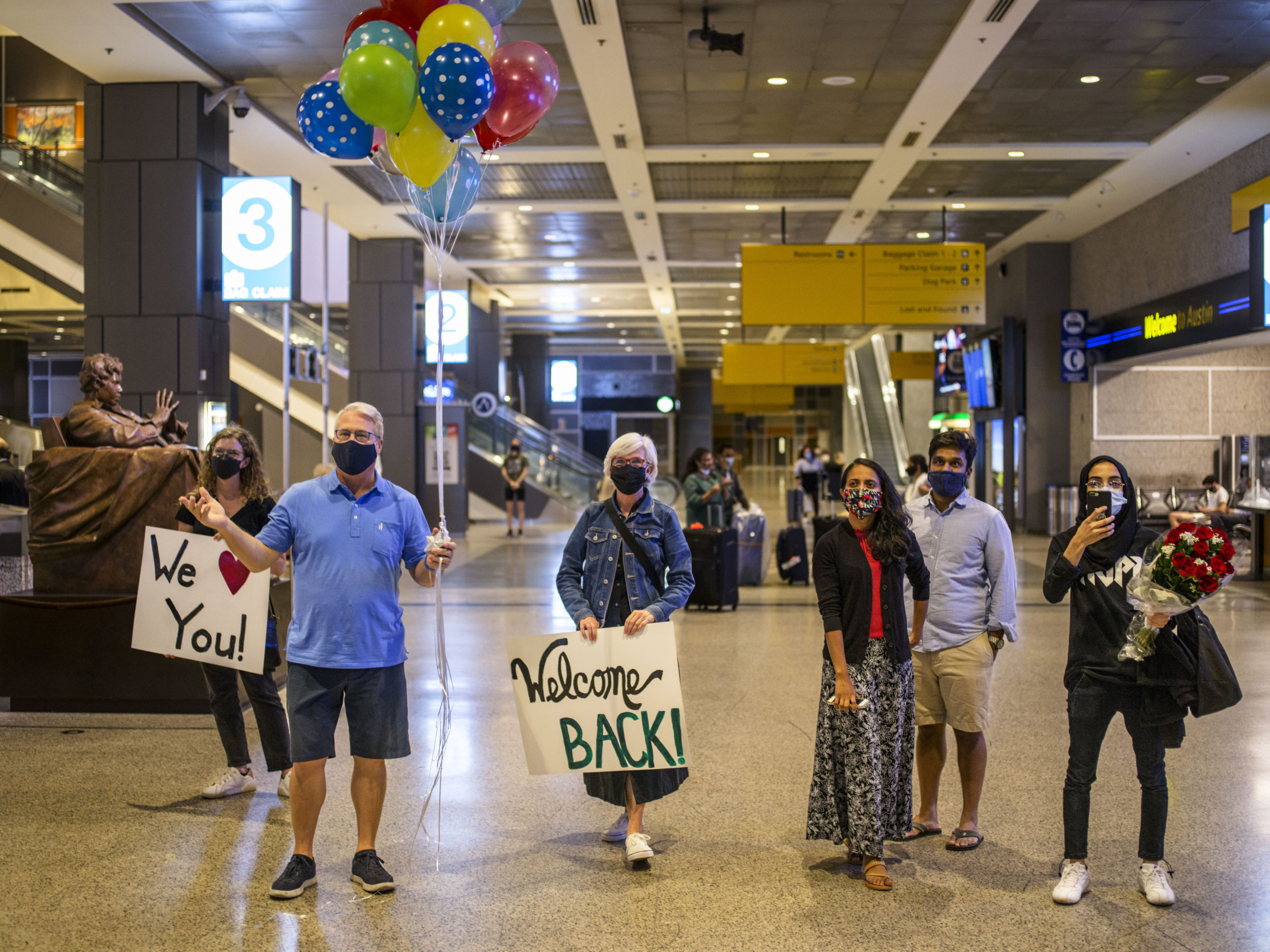
It was only later that Aadella and Naser sent their videos of August 26, with the hissing tear gas canisters, the crying girl in the yellow dress, the inconsolable cousins. They sent other videos too, of frenzied trips to the airport over the next several days. “They were some of the worst days of our lives,” Aadella said. “I can never forget what happened in front of my eyes. My ears were hurting from hearing too many gunshots.”
The bombings happened on Thursday. On Friday, August 27, the Sadaats went back to the airport again. Every day, the wait was longer and more desperate; Rizvi called each situation “a different parade of horribles.” They were told their names were on a list to get on a bus to get into the airport, but they waited 19 hours and the bus driver never came. Once the kids had to sleep on the street next to an open sewer line. It was blazingly hot. There was never enough water or food.
On Sunday, August 29, after hours at the airport, the Sadaat family had just returned to their relatives’ house when Keenan messaged them at 10 p.m. their time with what she called a “last ditch effort.” If they went back immediately, she could get them past the checkpoints and into the airport; once inside, their names were ready to be put on the manifest list the Truman Project was organizing for evacuation flights.
The family was back at the airport within 45 minutes; they made it all the way to the doors. They waited throughout the night. The Taliban came outside every few minutes and called names. The lucky recipients walked into the airport. Hour after hour, for 22 hours, the Sadaats waited outside. Their names were never called.
Their plane tickets were useless. The last U.S. diplomatic flights left the country. The evacuation deadline came and went. The Sadaats remained in Kabul.
For the Sadaat family, the days following the withdrawal deadline were dark. Naser gave his family’s information to several organizations offering to help but felt that, for most of the groups, “their promises were empty.” They remained with their relatives in Kabul for several weeks, hoping each day to leave.
Finally, after more than a month of hiding, they took a perilous, 11-hour journey on an overnight bus to Mazar-i-Sharif. Through the bubble-gum-and-duct-tape network of volunteers scrambling around the world, they had connected with Task Force Argo, a private organization made up of volunteer veterans, former and current special operators, and others with experience in the region. Zach Nunn, the co-founder of the group, told them they could help them get out of the country but only from Mazar. Naser was skeptical at first, especially after they faced a nearly week-long delay on their promised flights once they arrived. According to Nunn, Task Force Argo runs its flight manifests past the State Department, the intelligence community, the FBI, and the Department of Homeland Security before clearing people to fly out.
On October 8, nearly three months after arriving, Task Force Argo flew the Sadaat family to the United Arab Emirates. As the plane ascended above the country the family had now escaped twice, Naser broke into tears. “I cried a lot, for so many things,” he said.
After quarantining for two weeks in Dubai, following the country’s COVID-19 requirements, on October 26—two months to the day after their missed U.S. citizenship interviews—the Sadaats arrived at Austin-Bergstrom International Airport. Many of us who had kept virtual vigil with them were there at the airport with balloons and roses and signs that said, “Welcome back!”
Home is a complicated thing for the Sadaat family. Home is Afghanistan, a place where their extended families now remain in unceasing danger under an oppressive regime, and where the Sadaat children saw firsthand the generosity, warmth, and resilience of their relatives, neighbors, and friends. Home is also the United States, which has broken innumerable promises to their family over the years. And where they have had opportunities they could never have imagined in Afghanistan, to live without threat or retaliation, a place where all of their children—their daughters as well as their sons–can grow up in peace and safety and go to school to fulfill their dreams. They are home now, and they might never be home again.


